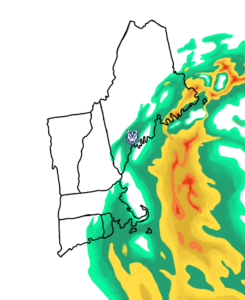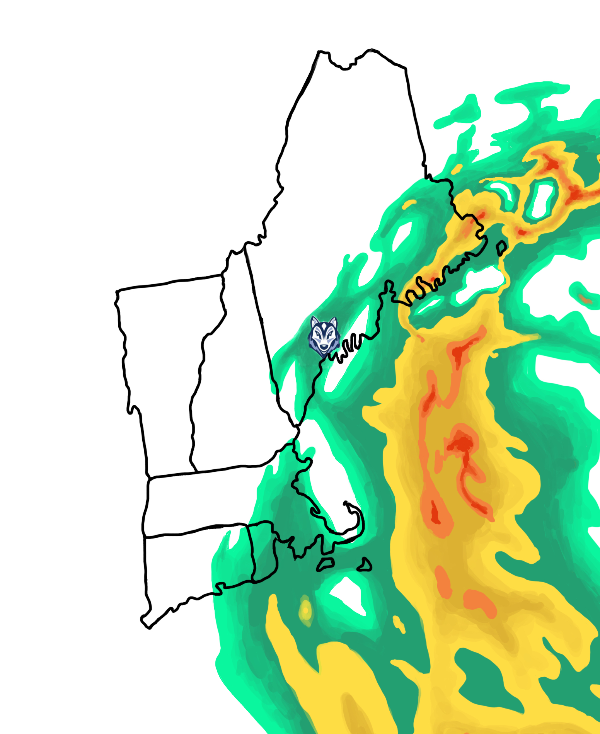By River Alleyne, Contributor
“Stay safe!” That’s all anyone in coastal Maine could say all Friday, emotionally bracing for the upcoming storm, Hurricane Lee.
Typically, we experience the tail end of hurricanes that affect the American South—and, sometimes, the Mid-Atlantic—before petering out and delivering a few rainy days and cold winds, but ultimately very little damage. It’s rare, even near the water, for a powerful storm like Lee to devastate. The last time the weather outlets predicted a walloping was Hurricane Bob in 1991, which was a Category 2 when it hit Rhode Island in late August and was only a tropical storm in Maine. Still, roughly 8,600 residents in York County evacuated and cost $42 million in damages in this state alone. As of 2023, Bob was the deadliest and third most expensive hurricane according to the National Oceanic and Atmospheric Administration.

Because of this rarity and the severity of the last occurrence, many Maine residents took extreme measures. Some decided to take weekend trips inland to New Hampshire and beyond to escape the worst of it, while others hunkered down and prepared for the worst. Shauna Martel, an Osher Map Library employee, did both. She drove to southern New Hampshire and prepared for high winds and power outages. “I took down any flags or things that would blow away,” she said. She and her partner also bought extra water and foods that didn’t require cooking: “Cereal, bread, sandwich meats, that kind of thing.” Despite preparing, the storm didn’t even reach that far inland. I asked her if she experienced any wind or rain and she said, “Effectively, we just got clouds… It was nice.”
In Gorham, it was a different story. Anyone on campus can tell you that the winds were fierce Saturday, cold and bitter, more reminiscent of November than mid-September. With gusts up to 44 miles per hour, classified as a fresh gale, around 1pm a downed tree fell on power lines on School Street (also known as Route 114) and knocked out power on campus for a few hours. Not optimal, but not nearly as bad as many feared. It was oddly dry. Sunday was back to normal.
Then, the rain came. From dawn to twilight Monday, the skies opened up. Even at noon, it was as dark as evening, the color of the clouds nearly matching the water-logged pavement. The ground was sloppy with mud and it was impossible to walk only five minutes and expect your shoes to still be dry when you got to where you were headed. There wasn’t a single dry moment all day.
Peculiarly, southeastern Maine got this tropical storm in two parts: the wind on Saturday, torrential downpour on Monday. All in all, though, we survived. It was not as bad as predicted, and for that we can be grateful.

